Teilen Sie Ihre Erfahrunge und Wünsche mit uns und anderen Usern!

 Working with Offsets
Working with Offsets
Hello Realvirtual.io Team,
in the robot configuration I deviate by -90 deg. on the Axis 2 and +90 deg. on Axis 3. Intuitively I tried to configure this with an offset, but as soon I try to calculate the inverse kinematics again and do path planning, things don't work as expected.
Range Axis2: -120; -5
When I add the offset of axis 2 by hand (lower limit: -30; upper limit: 85) then things work as expected, but since the robot will be connected via OPCUA Plugin, I don't know how to add the offset otherwise.
Robot: Kuka KR2700 prime
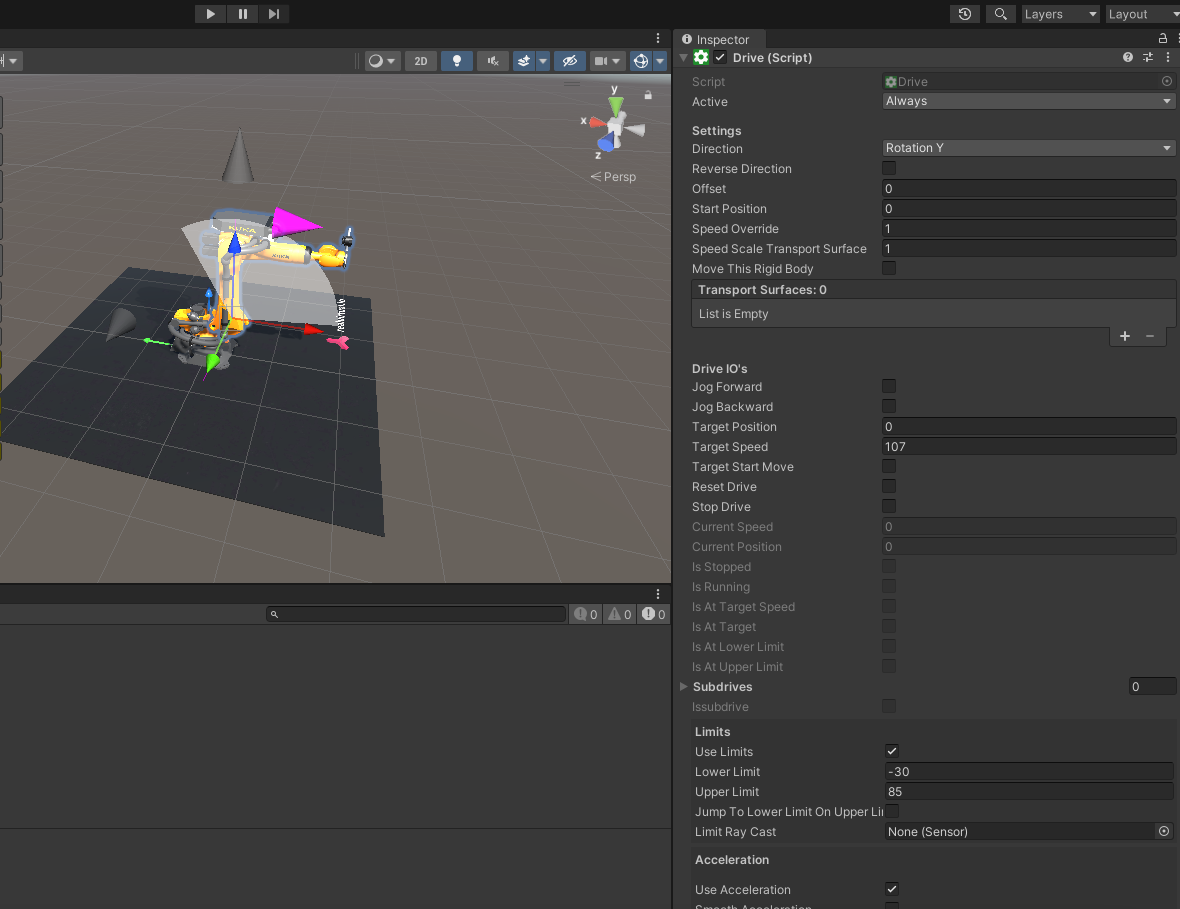
Thank you for your help!

Hi, the "home" position (=position in Editor Mode) for our IK must be always this
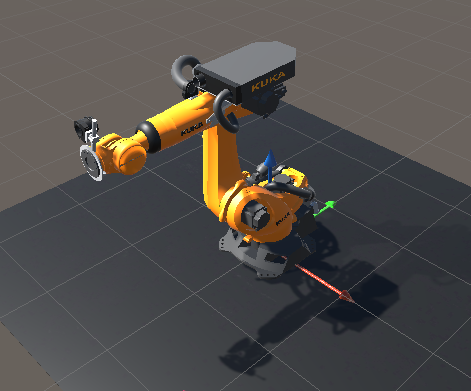
Otherwise the IK will not work.
Ideally this would be also the OPCUA Positions where each drive has Position 0. If not you can work with Offsets in the Drives. But youh should only use Offsets for OPCUA and not for our included inverse kinematics.
Maybe it is best to define two robots. One using our IK with the correct settings and one getting the Axis values over OPCUA.
If you thing that our IK is doing something wrong (your last picture) - please send us your project where we can check this to: https://realvirtual.io/send
Please only include what we really need and set the scene to a situation where we can see directly your problem.

 Robot IK Path (Target 0) Program - Not reachable
Robot IK Path (Target 0) Program - Not reachable
Hello. Realvirtual team.
I created a Robot IK Path (Target 0) while learning Robot IK following the realvirtual professional tutorial,
but I have a question because IK cannot reach the Target 0.
I used the "ABB IRB4400" Robot model and performed the following tasks.
1) Robot 6-axis configuration and Drive settings
2) Robot TCP configuration
3) Add Robot IK component and then 6-axis and TCP settings
4) Path creation and then IK Path component
→ When I tried Add new Target, it said it cannot be reached. (It is clearly an area that can be reached.)
→ I also tried moving the Target here and there, but the robot does not follow at all.
Can you guide me on where I made a mistake and caused this situation?
Thanks.
Best regards,
Seokhyun Lee
※ Problem Situation (Capture)
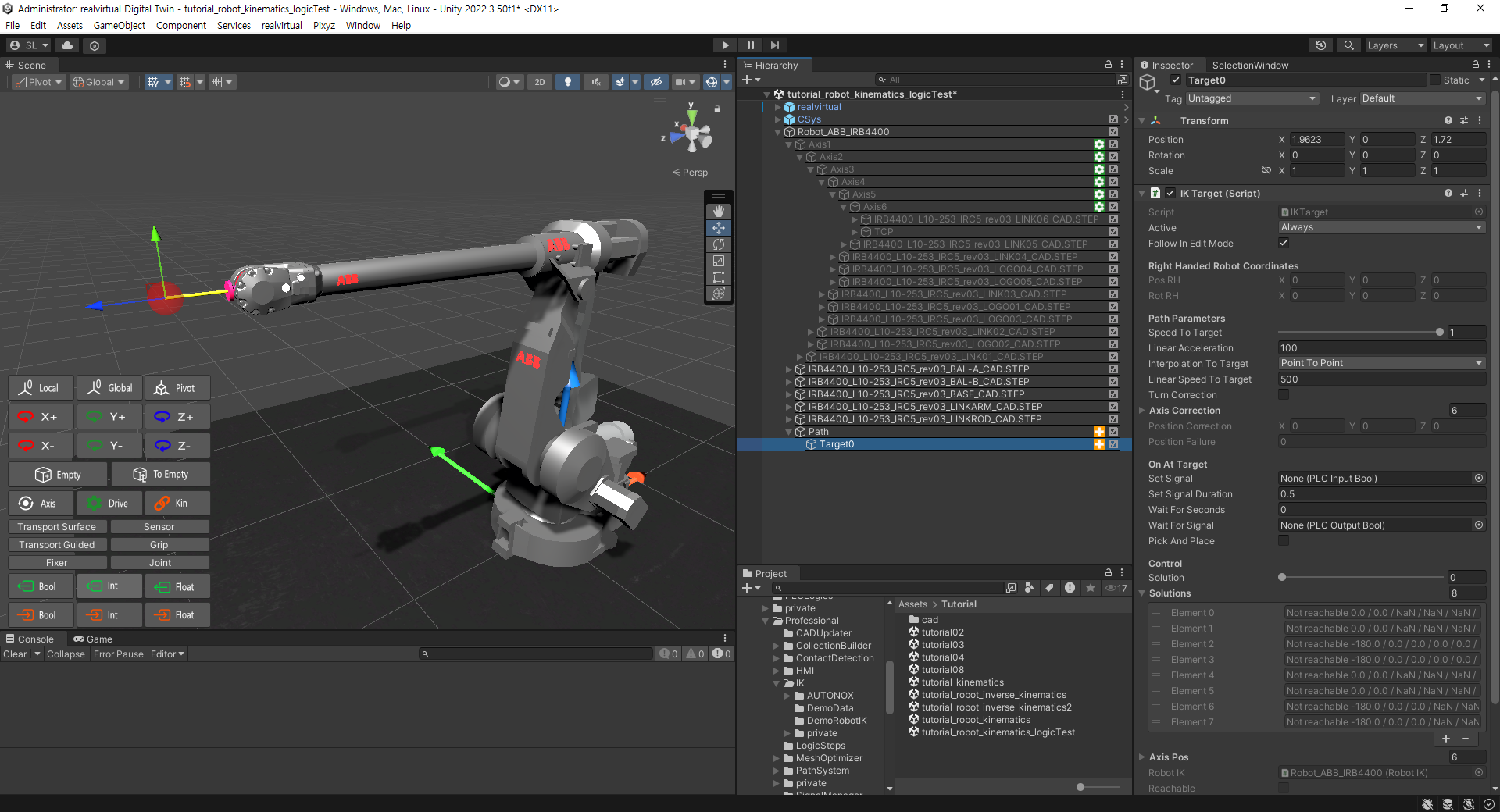
※ Robot Setting (Capture)
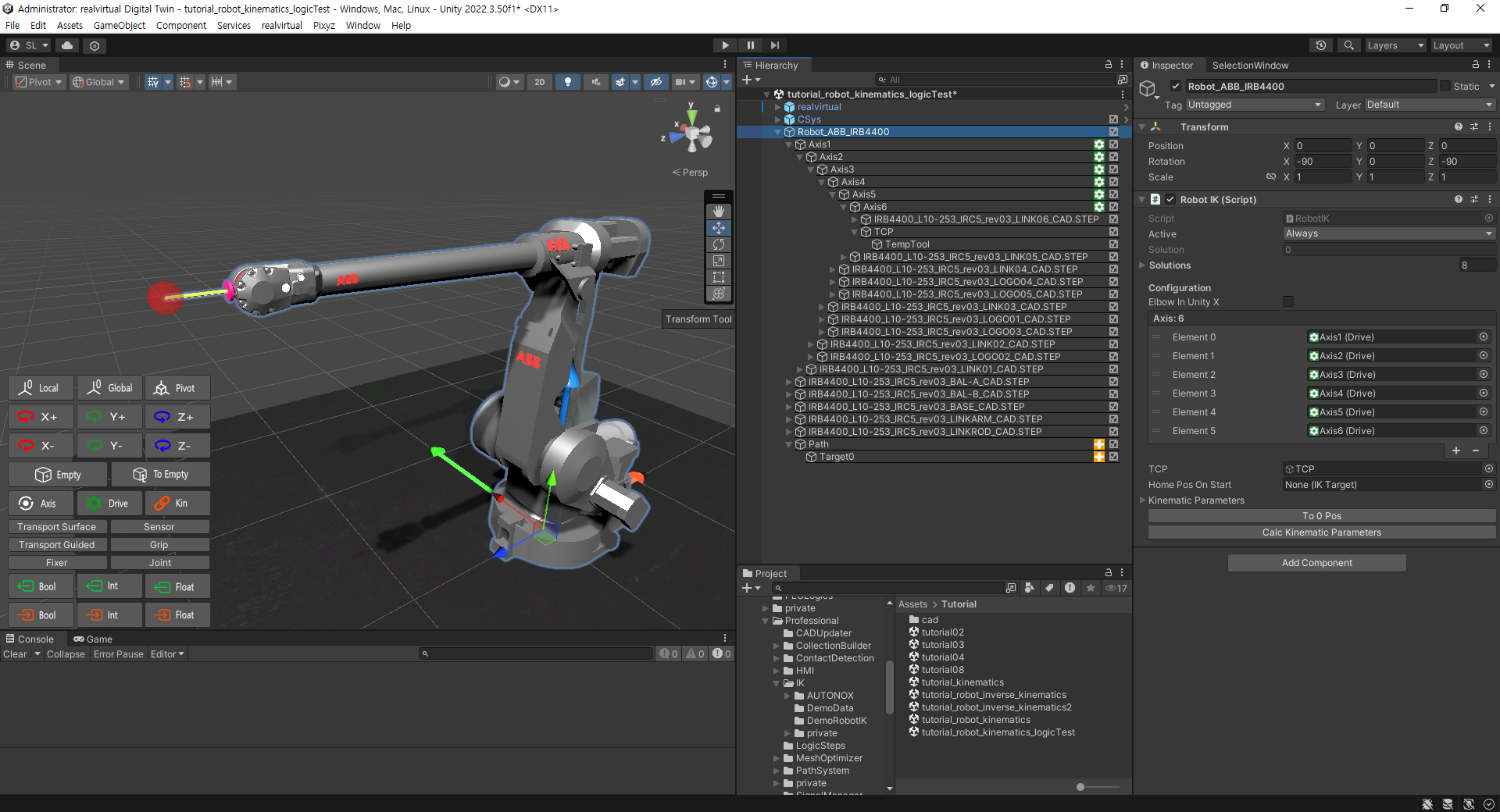
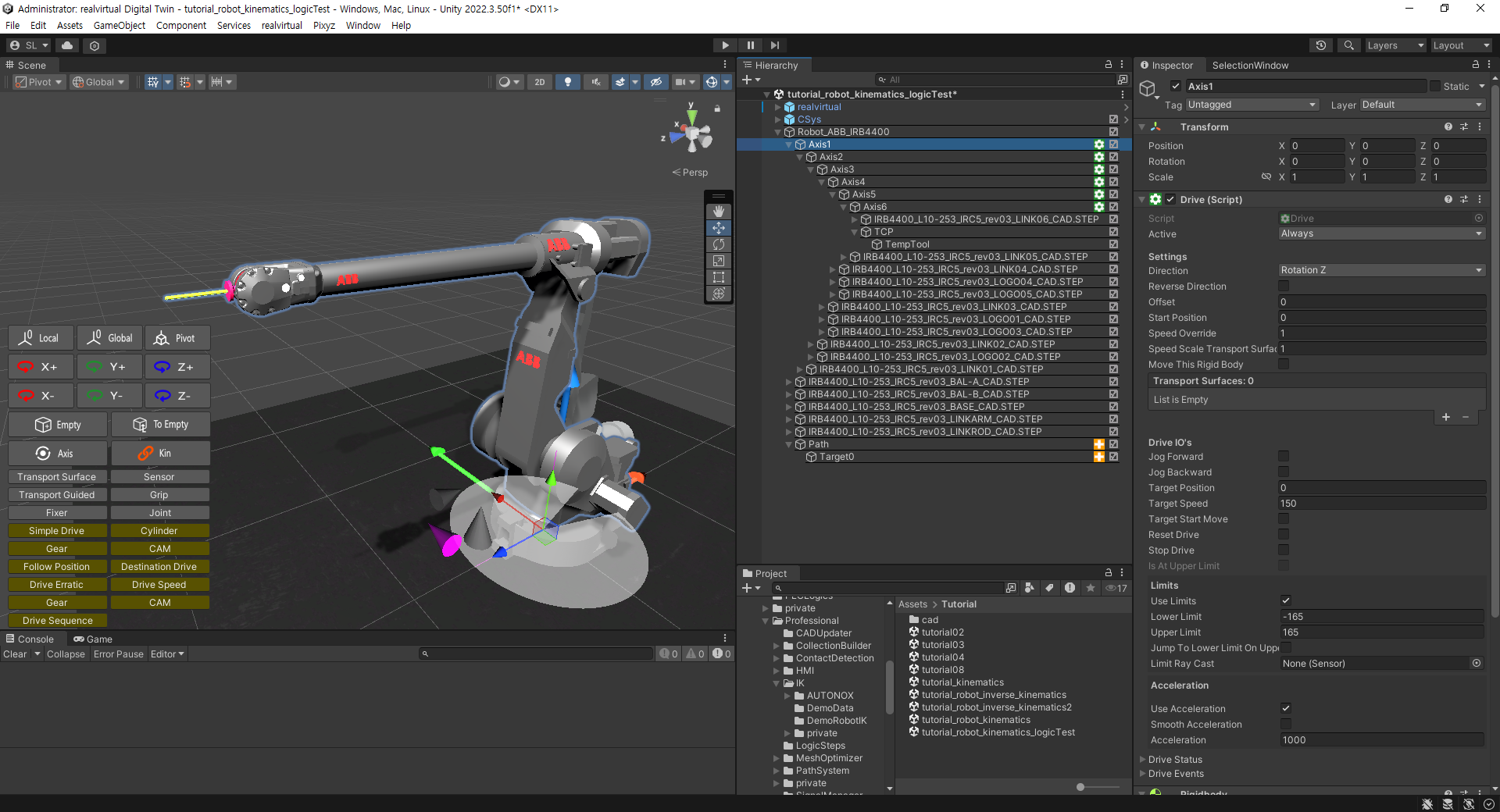
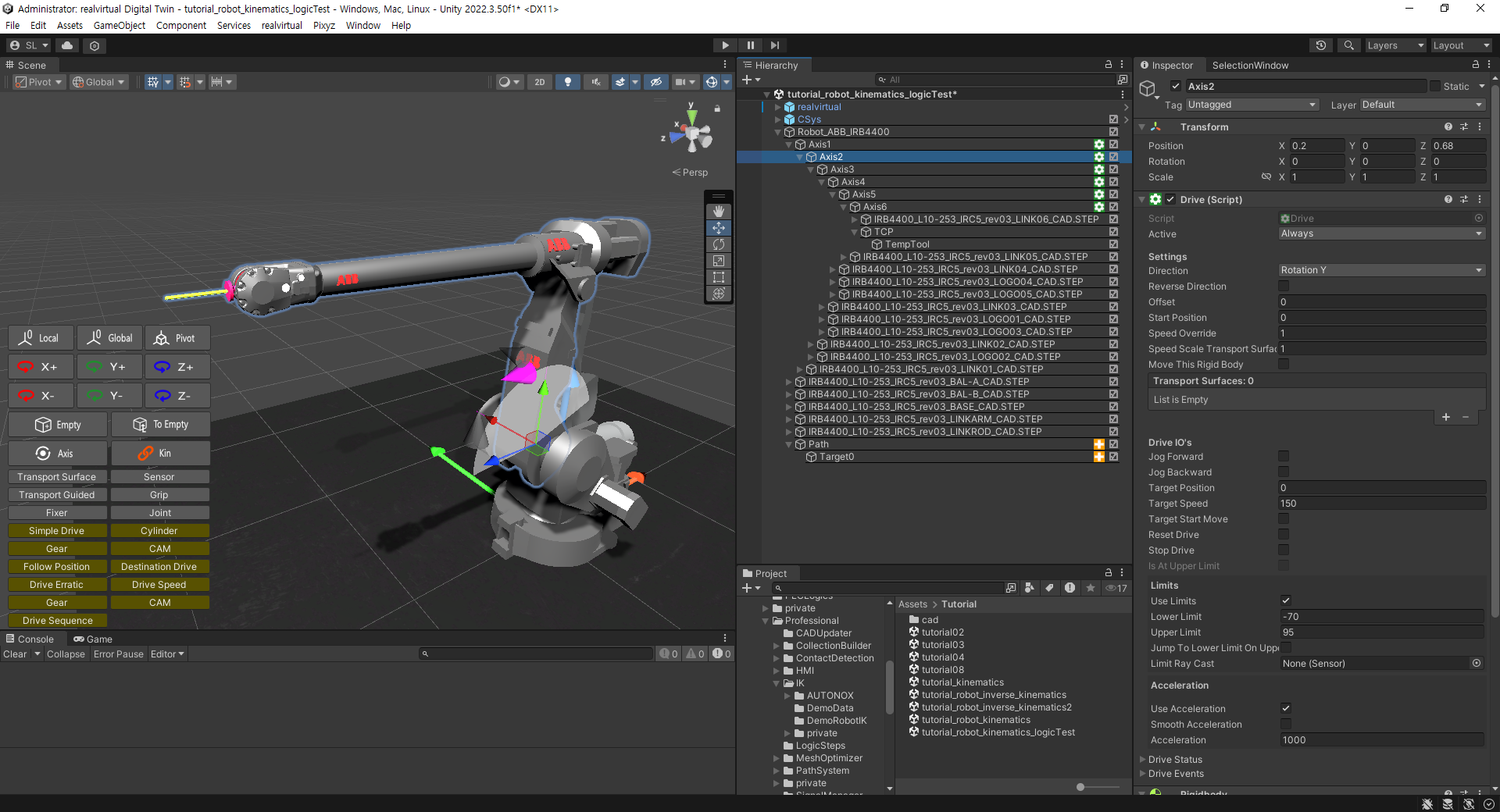
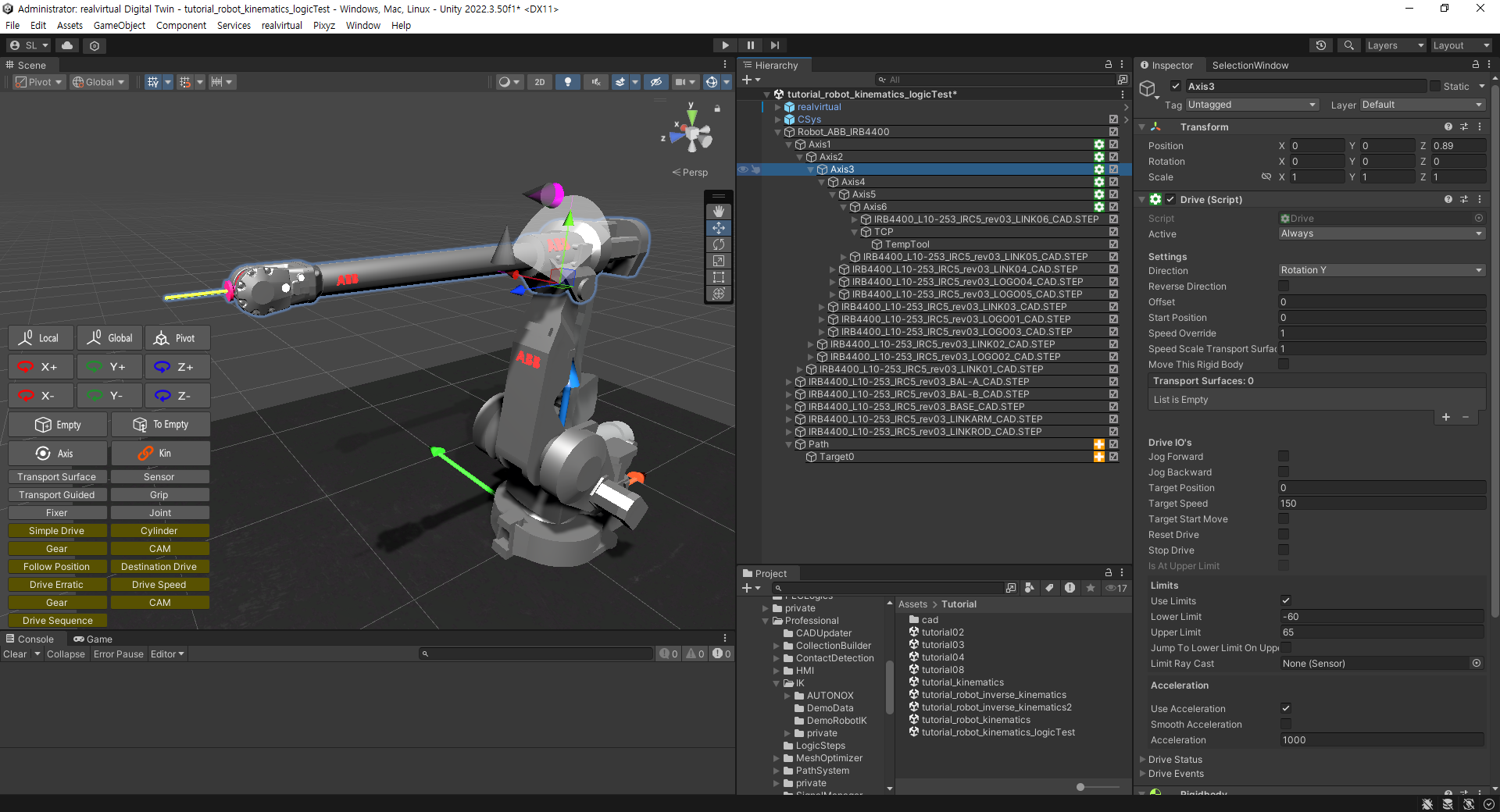
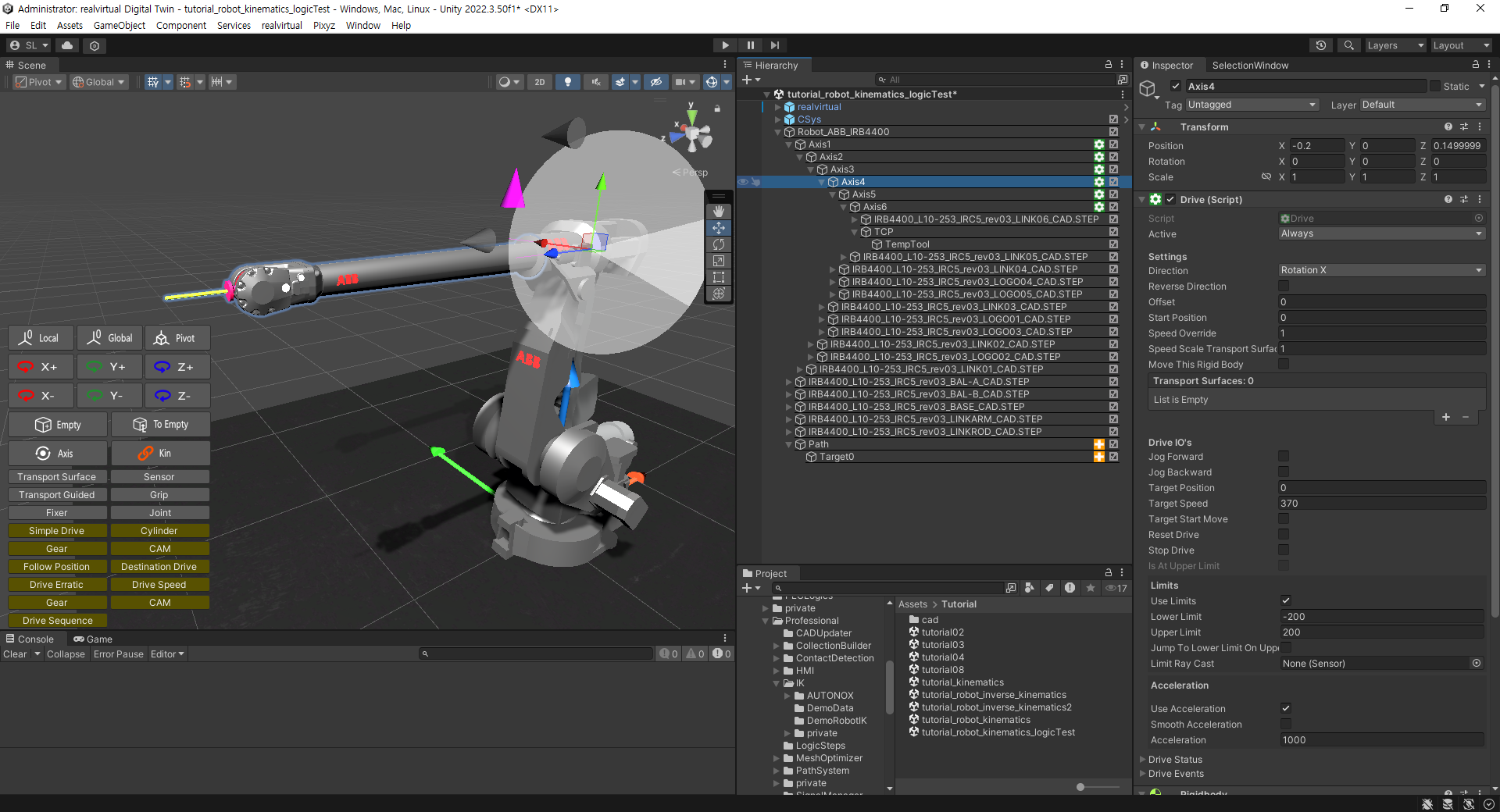
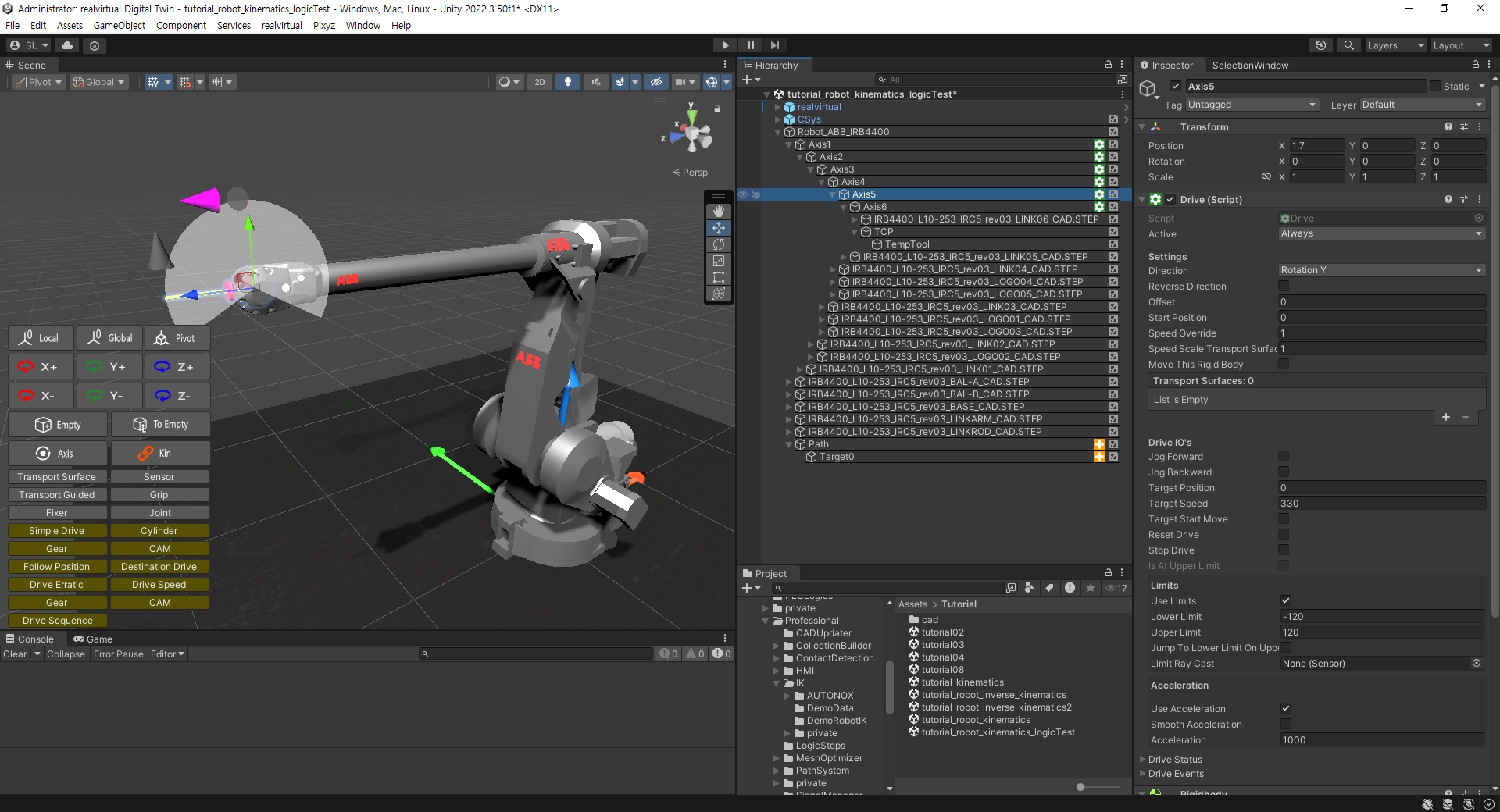
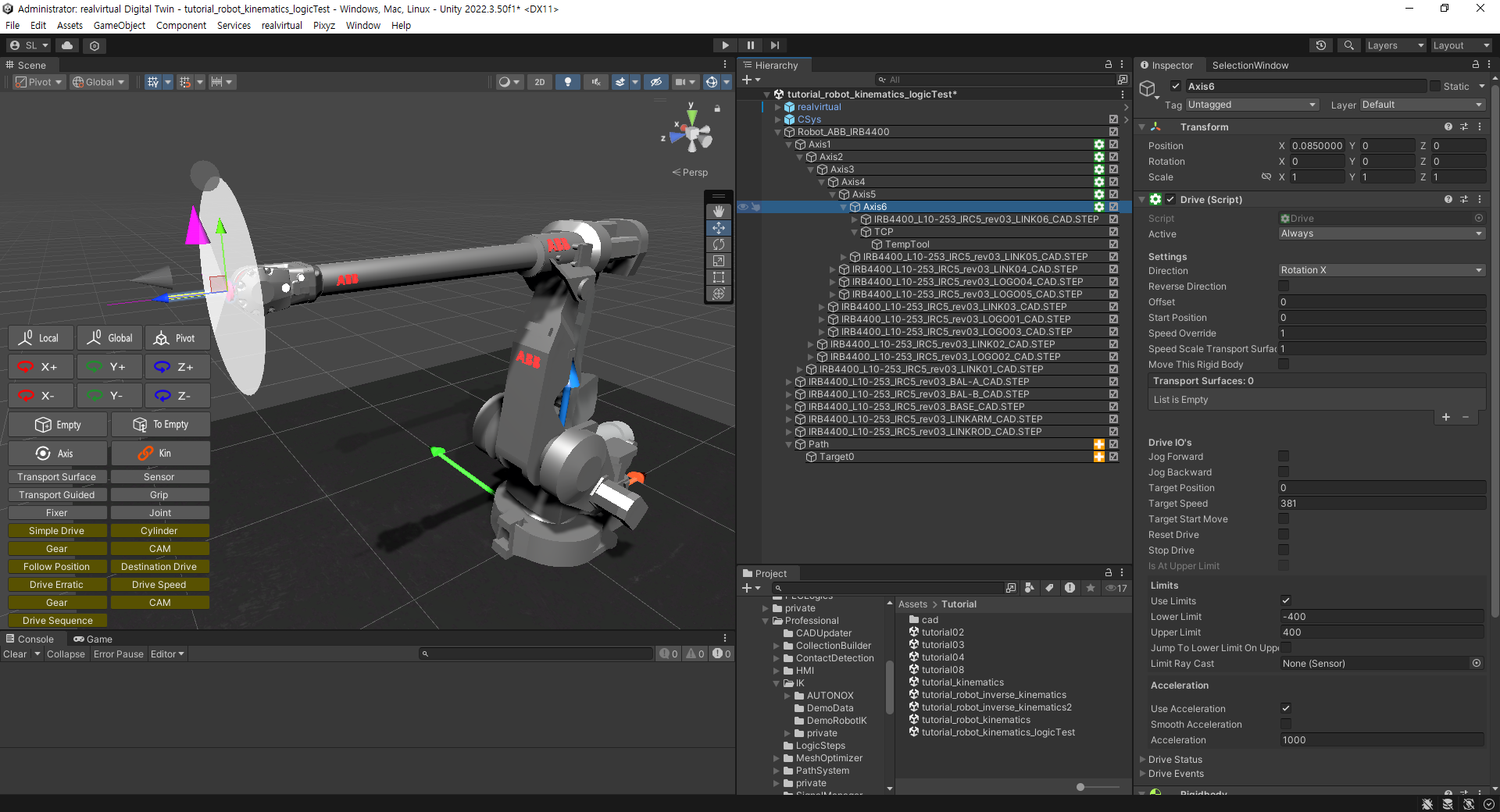
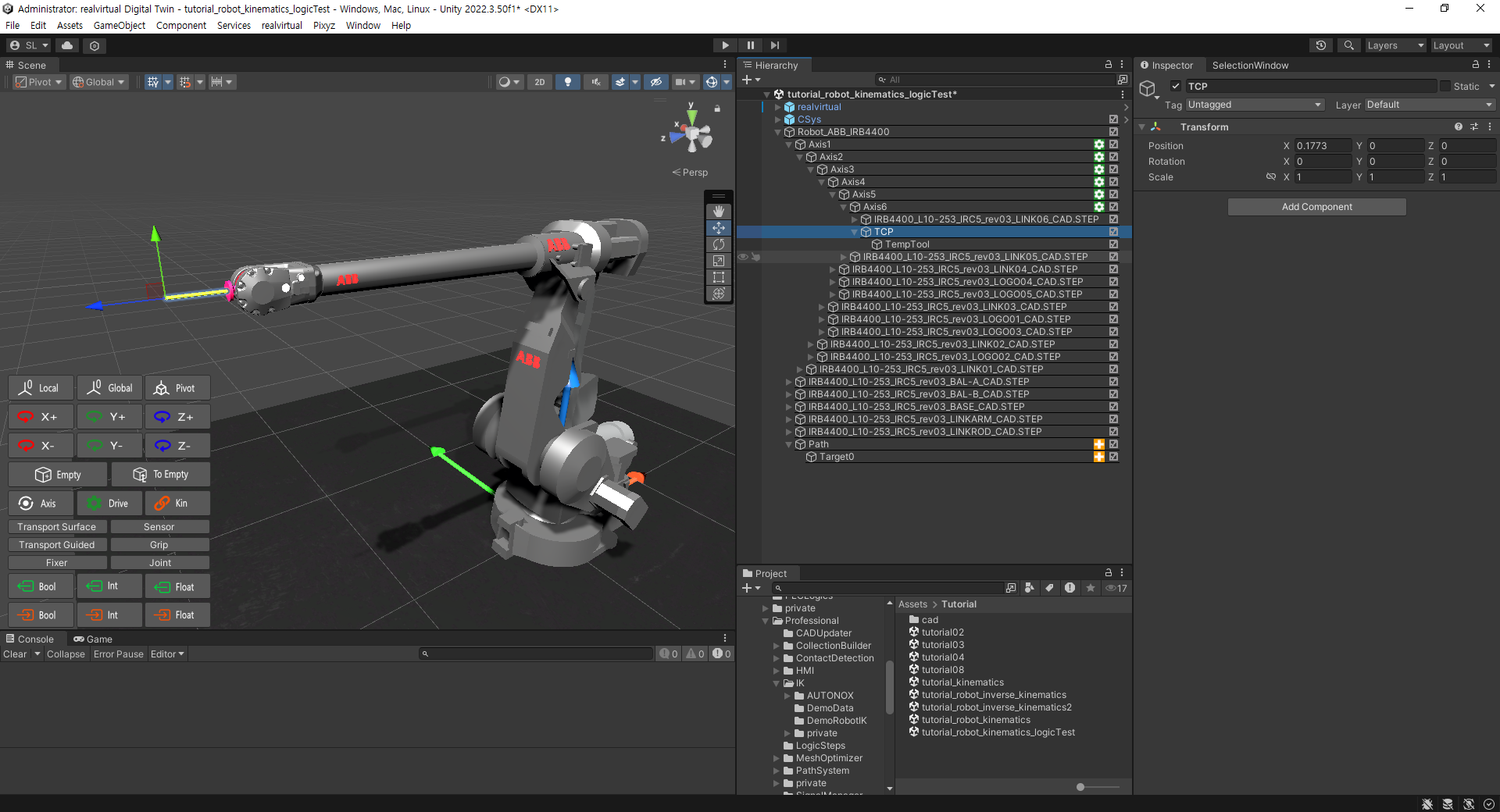

 Sensor.cs - Problem in OnTriggerExit
Sensor.cs - Problem in OnTriggerExit
Hello realvirtual team,
on working with the sensor component I encountered an issue in the OnTriggerExit event.
I use the sensor event "EventExit" to trigger logic in my own scripts.
In my application I have a sensor on a MU and this MU stands on a conveyor.
When the MU leaves the conveyor I want to invoke an event in a seperate script.
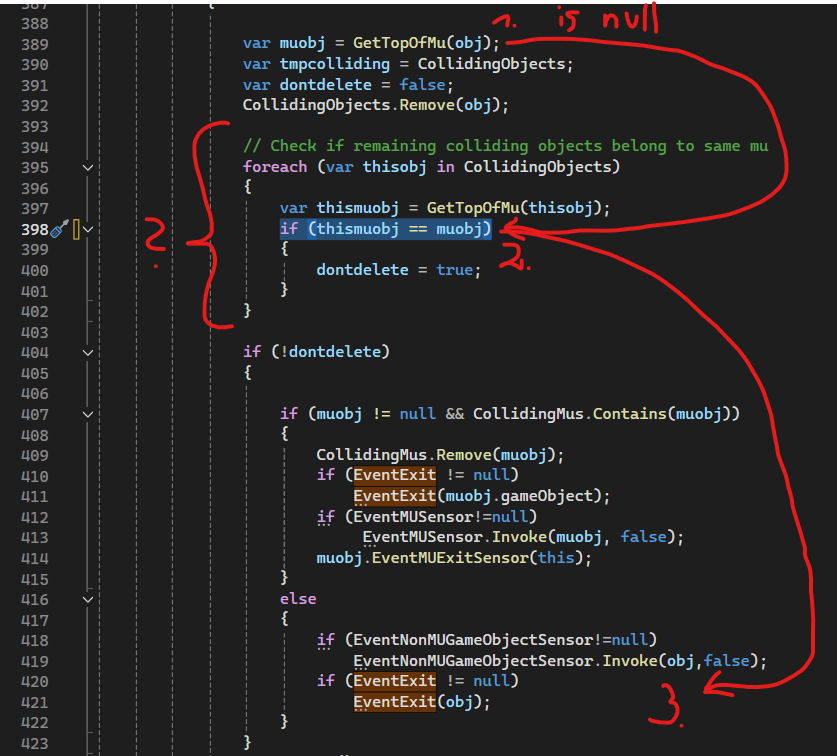
The problem is that the conveyor is not a MU and therefore "muobj" is null. This is correct.
But because of that the statement "if (thismuobj == muobj)" gets true (both is "null") and the EventExit is not getting invoked.
I am not exactly sure why the foreach statement is necessary.
I changed the codeline 398 to this: (so the EventExit is getting invoked)

Please check if this change is a problem in other cases. Maybe you can implement it in the next update.
Thank you very much.
Best regards,
Andreas

Hello,
the "OnExit" event of the sensor is triggered when a MU exits the sensor. If I understand correctly, you’ve attached the sensor as a component of the MU. In that case, it won’t work as intended.
We won’t be changing this in the release because the for-each loops account for the fact that a single MU can consist of multiple colliders, which the sensor may detect.
I recommend the following approach: place the sensor as a standalone GameObject at the end of your conveyor and use it to trigger your script.
Alternatively, you could use Unity's standard OnCollisionExit method on your own component attached to your MU.
Best regards
Christin

 Force drive to move vertical chain
Force drive to move vertical chain
Hello, is it possible to control chain with "Force Drive"? I need to prepare a device which transport load/MUs on shelves arranged in vertical chain. If there is some load on shelves and drive torque is 0, it will move/fall down according
to gravity. On the oder hand, chain is "balanced" if all shelves are empty and will not move even if torque on drive is 0. Is it possible to simulate such device?

Hi,
the current chain only functions with the drive component set to “virtual,” as configured in the sample scene. Using this setup, you should be able to build your device, and Unity physics should operate correctly in this case.

 Transport surface rotation axle moved from the centre
Transport surface rotation axle moved from the centre
Hello, I've been testing demo scene "MovingTransportSurface". As it is mentioned in the documentation "If the parent drive of the transport surface is rotating, the pivot points (centre of rotation) of both objects must be in the same position for the movement to be transmitted correctly". It is OK if you need to rotate around axle in the centre of transport surface. But I wondering if it is possible to rotate transport surface around axle which is not in the centre of transport surface. It looks like the pivot of the transport surface must be moved, but is it possible to do this?

Hi,
currently it isn't possible to rotate it off-center. We will work on this for the next release.
Regards Christin

 Gripper.cs - Bug with 'grippedonclosing'
Gripper.cs - Bug with 'grippedonclosing'
Hello,
I am trying out the Gripper.cs component and faced a problem with the variable 'grippedonclosing'
After gripping a MU this variable gets set but reset is missing. This leads to the problem that the gripper keeps closing only to the last grippedonclosing position even if no MU is available.
I added this one code line:

Best regards,
Andreas

Hi,
thank you for reporting this issue. We will fix this in the next release.
Best regards
Christin

 HMI_Slider: "SignalIntStart" is not used
HMI_Slider: "SignalIntStart" is not used
Hello,
I want to use the HMI_Slider multiplexed. Basicially one slider for several signal sources.
Now I realized that the property "SignalIntStart" is unused.
I wanted to use this Signal to manipulate the slider value when multiplexed signal has changed.
Or do I misunderstand something?

Hi,
currently it isn't possible to enter values by keyboard using HMI-components. Those components only using signals from the PLC to set or get values. For having an element to enter values you have to set up your own UI using unity standard UI elements like canvas etc.. An example in realvirtual you'll find in realvirtual/UI. This is where our UI is implemented.
Thanks for the hint concerning "SignalIntStart", I'll fix this with the next release.
Best regards
Christin

 Connected button isn't getting green (PlcSimAdvanced)
Connected button isn't getting green (PlcSimAdvanced)
Hi!
The connection button isn't getting green while connection to PlcSimAdvanced is working.
After research I couldn't find the image of the green button neither the code why it should get green.
Can you please give me an advice for fixing this?

 How to cancel IKPath to start another IKPath
How to cancel IKPath to start another IKPath
Hello,
how can I properly cancel the currently running IKPath to start another Path. For example to force home positioning.
I want to cancel and start the paths by another script.
Best regards,
Andreas
Customer support service by UserEcho


